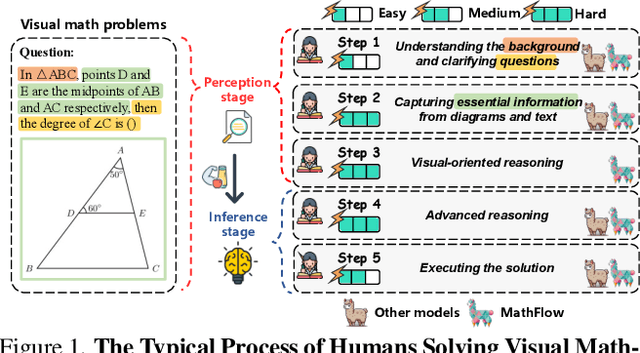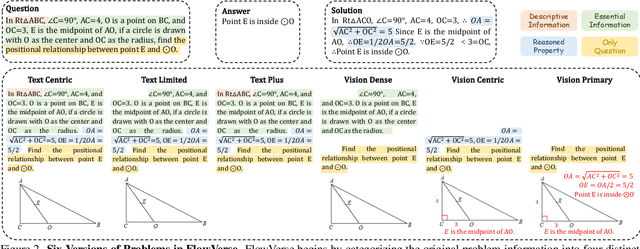Pengwei Liu
SpatialCrafter: Unleashing the Imagination of Video Diffusion Models for Scene Reconstruction from Limited Observations
May 17, 2025Abstract:Novel view synthesis (NVS) boosts immersive experiences in computer vision and graphics. Existing techniques, though progressed, rely on dense multi-view observations, restricting their application. This work takes on the challenge of reconstructing photorealistic 3D scenes from sparse or single-view inputs. We introduce SpatialCrafter, a framework that leverages the rich knowledge in video diffusion models to generate plausible additional observations, thereby alleviating reconstruction ambiguity. Through a trainable camera encoder and an epipolar attention mechanism for explicit geometric constraints, we achieve precise camera control and 3D consistency, further reinforced by a unified scale estimation strategy to handle scale discrepancies across datasets. Furthermore, by integrating monocular depth priors with semantic features in the video latent space, our framework directly regresses 3D Gaussian primitives and efficiently processes long-sequence features using a hybrid network structure. Extensive experiments show our method enhances sparse view reconstruction and restores the realistic appearance of 3D scenes.
NTIRE 2025 Challenge on Image Super-Resolution ($\times$4): Methods and Results
Apr 20, 2025Abstract:This paper presents the NTIRE 2025 image super-resolution ($\times$4) challenge, one of the associated competitions of the 10th NTIRE Workshop at CVPR 2025. The challenge aims to recover high-resolution (HR) images from low-resolution (LR) counterparts generated through bicubic downsampling with a $\times$4 scaling factor. The objective is to develop effective network designs or solutions that achieve state-of-the-art SR performance. To reflect the dual objectives of image SR research, the challenge includes two sub-tracks: (1) a restoration track, emphasizes pixel-wise accuracy and ranks submissions based on PSNR; (2) a perceptual track, focuses on visual realism and ranks results by a perceptual score. A total of 286 participants registered for the competition, with 25 teams submitting valid entries. This report summarizes the challenge design, datasets, evaluation protocol, the main results, and methods of each team. The challenge serves as a benchmark to advance the state of the art and foster progress in image SR.
MathFlow: Enhancing the Perceptual Flow of MLLMs for Visual Mathematical Problems
Mar 19, 2025



Abstract:Despite impressive performance across diverse tasks, Multimodal Large Language Models (MLLMs) have yet to fully demonstrate their potential in visual mathematical problem-solving, particularly in accurately perceiving and interpreting diagrams. Inspired by typical processes of humans, we hypothesize that the perception capabilities to extract meaningful information from diagrams is crucial, as it directly impacts subsequent inference processes. To validate this hypothesis, we developed FlowVerse, a comprehensive benchmark that categorizes all information used during problem-solving into four components, which are then combined into six problem versions for evaluation. Our preliminary results on FlowVerse reveal that existing MLLMs exhibit substantial limitations when extracting essential information and reasoned property from diagrams and performing complex reasoning based on these visual inputs. In response, we introduce MathFlow, a modular problem-solving pipeline that decouples perception and inference into distinct stages, thereby optimizing each independently. Given the perceptual limitations observed in current MLLMs, we trained MathFlow-P-7B as a dedicated perception model. Experimental results indicate that MathFlow-P-7B yields substantial performance gains when integrated with various closed-source and open-source inference models. This demonstrates the effectiveness of the MathFlow pipeline and its compatibility to diverse inference frameworks. The FlowVerse benchmark and code are available at https://github.com/MathFlow-zju/MathFlow.
PAPM: A Physics-aware Proxy Model for Process Systems
Jul 07, 2024



Abstract:In the context of proxy modeling for process systems, traditional data-driven deep learning approaches frequently encounter significant challenges, such as substantial training costs induced by large amounts of data, and limited generalization capabilities. As a promising alternative, physics-aware models incorporate partial physics knowledge to ameliorate these challenges. Although demonstrating efficacy, they fall short in terms of exploration depth and universality. To address these shortcomings, we introduce a physics-aware proxy model (PAPM) that fully incorporates partial prior physics of process systems, which includes multiple input conditions and the general form of conservation relations, resulting in better out-of-sample generalization. Additionally, PAPM contains a holistic temporal-spatial stepping module for flexible adaptation across various process systems. Through systematic comparisons with state-of-the-art pure data-driven and physics-aware models across five two-dimensional benchmarks in nine generalization tasks, PAPM notably achieves an average performance improvement of 6.7%, while requiring fewer FLOPs, and just 1% of the parameters compared to the prior leading method. The code is available at https://github.com/pengwei07/PAPM.
DSAF: A Dual-Stage Adaptive Framework for Numerical Weather Prediction Downscaling
Dec 19, 2023Abstract:While widely recognized as one of the most substantial weather forecasting methodologies, Numerical Weather Prediction (NWP) usually suffers from relatively coarse resolution and inevitable bias due to tempo-spatial discretization, physical parametrization process, and computation limitation. With the roaring growth of deep learning-based techniques, we propose the Dual-Stage Adaptive Framework (DSAF), a novel framework to address regional NWP downscaling and bias correction tasks. DSAF uniquely incorporates adaptive elements in its design to ensure a flexible response to evolving weather conditions. Specifically, NWP downscaling and correction are well-decoupled in the framework and can be applied independently, which strategically guides the optimization trajectory of the model. Utilizing a multi-task learning mechanism and an uncertainty-weighted loss function, DSAF facilitates balanced training across various weather factors. Additionally, our specifically designed attention-centric learnable module effectively integrates geographic information, proficiently managing complex interrelationships. Experimental validation on the ECMWF operational forecast (HRES) and reanalysis (ERA5) archive demonstrates DSAF's superior performance over existing state-of-the-art models and shows substantial improvements when existing models are augmented using our proposed modules. Code is publicly available at https://github.com/pengwei07/DSAF.
 Add to Chrome
Add to Chrome Add to Firefox
Add to Firefox Add to Edge
Add to Edge